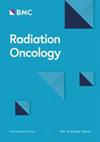接受放射治疗的不可切除胆道癌症的临床结果和风险分层
IF 3.3
2区 医学
Q2 ONCOLOGY
引用次数: 0
摘要
胆道癌(BTC)是一种罕见的侵袭性恶性肿瘤,起源于肝内、肝外胆管和胆囊。手术是唯一的根治选择,但由于诊断较晚,往往不可行,因此化疗成为主要治疗手段。放疗(RT)是不可切除、非转移性 BTC 患者的有效替代疗法,尽管其预后普遍较差且存在很大的变异性。为了帮助管理接受 RT 治疗的不可切除 BTC 患者,我们旨在找出有助于预测总生存期(OS)的预后标志物。宾夕法尼亚大学开展了一项回顾性队列研究,共有 78 名接受确定性 RT 治疗的不可切除 BTC 患者参与。研究人员从电子病历中提取了全面的人口统计学、临床和治疗相关数据。采用单变量和多变量 Cox 回归来确定 RT 术后 OS 的预测因素。还开发了一个生物标志物模型,用于完善生存预测。队列中的患者主要表现良好,发病时无明显肝功能障碍。主要的治疗方法包括低分次RT或同时进行基于5FU的化疗RT。RT 后的中位 OS 为 12.3 个月,20 例患者(15.6%)出现局部进展,中位时间为 30.1 个月。通过单变量和多变量分析发现,CA19-9(高于中位数)和发病时白蛋白-胆红素(ALBI)分级较高是不良OS的重要预测因素。无危险因素的患者 RT 后的中位生存期为 24 个月,有危险因素的患者为 6.3 个月。我们的研究表明,接受 RT 治疗的不可切除 BTC 患者的 OS 普遍较差,但存在明显的异质性。我们开发了一种基于 CA19-9 和 ALBI 分级的生物标志物模型,该模型可以区分预后明显不同的亚群。该模型可帮助临床治疗这种具有挑战性的疾病。本文章由计算机程序翻译,如有差异,请以英文原文为准。
Clinical outcomes and risk stratification in unresectable biliary tract cancers undergoing radiation therapy
Biliary tract cancers (BTC) are rare and aggressive malignancies originating from intrahepatic and extrahepatic bile ducts and the gallbladder. Surgery is the only curative option, but due to late-stage diagnosis, is frequently not feasible, leaving chemotherapy as the primary treatment. Radiotherapy (RT) can be an effective alternative for patients with unresectable, non-metastatic BTC despite the generally poor prognosis and significant variability. To help manage patients with unresectable BTC who receive RT, we aimed to identify prognostic markers that could aid in predicting overall survival (OS). A retrospective cohort study was conducted at the University of Pennsylvania, involving seventy-eight patients with unresectable BTC treated with definitive intent RT. Comprehensive demographic, clinical, and treatment-related data were extracted from the electronic medical records. Univariate and multivariate Cox regressions were employed to identify predictors of OS after RT. A biomarker model was developed for refined survival prediction. The cohort primarily comprised patients with good performance status without significant hepatic dysfunction at presentation. The predominant treatment approach involved hypofractionated RT or concurrent 5FU-based chemoRT. Median OS after RT was 12.3 months, and 20 patients (15.6%) experienced local progression with a median time of 30.1 months. Univariate and multivariate analyses identified CA19-9 (above median) and higher albumin-bilirubin (ALBI) grades at presentation as significant predictors of poor OS. Median OS after RT was 24 months for patients with no risk factors and 6.3 months for those with both. Our study demonstrates generally poor but significantly heterogeneous OS in patients with unresectable BTC treated with RT. We have developed a biomarker model based on CA19-9 and ALBI grade at presentation that can distinguish sub-populations with markedly diverse prognoses. This model can aid the clinical management of this challenging disease.
求助全文
通过发布文献求助,成功后即可免费获取论文全文。
去求助
来源期刊

Radiation Oncology
ONCOLOGY-RADIOLOGY, NUCLEAR MEDICINE & MEDICAL IMAGING
CiteScore
6.50
自引率
2.80%
发文量
181
审稿时长
3-6 weeks
期刊介绍:
Radiation Oncology encompasses all aspects of research that impacts on the treatment of cancer using radiation. It publishes findings in molecular and cellular radiation biology, radiation physics, radiation technology, and clinical oncology.
 求助内容:
求助内容: 应助结果提醒方式:
应助结果提醒方式:


